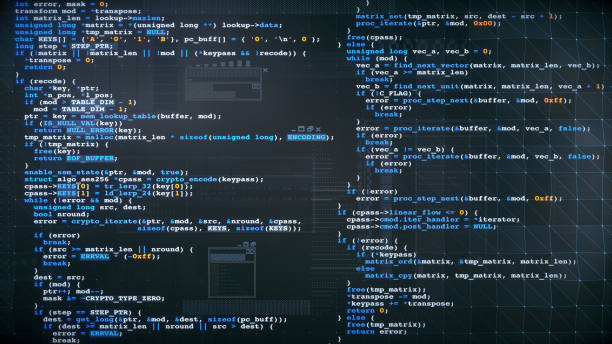Computer programming is one of the most transformative disciplines of the modern age. It is the process by which humans communicate with machines, transforming ideas into instructions that computers can execute to solve problems, automate processes, and power the digital world. From the simplest mobile application to the most complex artificial intelligence system, programming is the language of modern innovation. But behind the art of writing code lies a deep scientific foundation—a blend of mathematics, logic, linguistics, engineering, and cognitive science—that makes computer programming not just a craft, but a science in its own right.
Understanding the science behind programming requires exploring how computers process information, how algorithms are constructed, how languages evolve, and how human thought interacts with machine logic. Programming is both an engineering practice and a scientific exploration of computation itself. To grasp it fully, one must examine its mathematical roots, its logical structure, and the ways in which it mirrors the processes of human reasoning.
The Foundations of Computation
At its core, computer programming is built upon the science of computation—the study of how information can be represented, manipulated, and processed systematically. Computation predates modern computers, tracing its roots to mathematics and logic.
The earliest ideas about computation emerged from the work of mathematicians such as George Boole, who developed Boolean algebra in the 19th century. Boolean logic introduced the concept of true and false values and the logical operations AND, OR, and NOT—concepts that remain fundamental to programming today. Every computer operation, from simple comparisons to complex decision-making, can ultimately be expressed using Boolean logic.
Another milestone came with the work of Alan Turing in the 1930s. Turing’s concept of a “universal machine” was a theoretical model capable of performing any computation given enough time and memory. This model, now known as the Turing Machine, laid the foundation for computer science. It showed that all computable problems could be represented as sequences of logical steps—an idea that underlies every modern programming language and computing system.
Programming is, therefore, an applied form of computational theory. When a programmer writes code, they are effectively defining a computational process: a set of precise instructions that transform input data into output. Every algorithm, no matter how complex, can be viewed as an implementation of a theoretical computational model.
Algorithms: The Blueprint of Logic
At the heart of every program lies an algorithm—a well-defined set of instructions designed to perform a specific task or solve a particular problem. Algorithms are the scientific backbone of programming. They embody logical reasoning and mathematical precision, ensuring that a program not only works but works efficiently.
The study of algorithms is both theoretical and practical. Theoretically, computer scientists analyze algorithms in terms of correctness, complexity, and efficiency. Practically, programmers implement these algorithms in code to achieve real-world results.
The efficiency of an algorithm is often described using Big O notation, a mathematical expression that captures how the running time or space requirements of an algorithm grow as the size of its input increases. For example, an algorithm with O(n) complexity grows linearly with its input, while one with O(n²) grows quadratically. This analysis helps programmers design systems that perform optimally even under heavy loads, such as search engines or database systems handling millions of records.
Algorithms also reveal the beauty of abstraction in computer science. Whether it’s sorting a list of names, finding the shortest path between cities, or encrypting a message, each algorithm represents a universal pattern of reasoning. Programmers build upon these patterns, refining and combining them to create more sophisticated systems.
The Language of Programming
Programming languages are the means through which humans express algorithms in a form that computers can understand. They serve as the bridge between human logic and machine execution. Although there are hundreds of programming languages—such as C, Python, Java, and Rust—they all share a common foundation in syntax, semantics, and logic.
The syntax of a programming language defines the rules for writing code—the structure and symbols that the computer recognizes as meaningful. The semantics define the meaning of those structures—what the computer actually does when it executes them. Together, syntax and semantics form a linguistic system not unlike human language, but far more rigid and precise.
The evolution of programming languages mirrors the evolution of scientific abstraction. The earliest languages, such as Assembly, were close to machine code and required programmers to think in terms of hardware operations. As computers evolved, so did programming languages. High-level languages introduced abstraction, allowing programmers to think in terms of problems rather than processors. Today’s languages even support paradigms such as object-oriented, functional, and declarative programming, each representing different ways of structuring thought.
Behind every programming language lies a formal grammar, a mathematical structure that defines how statements and expressions can be composed. This grammar is often described using Backus–Naur Form (BNF), a notation that captures the syntax rules of a language. This formalism enables compilers and interpreters—programs that translate code into machine instructions—to parse and understand what the programmer has written.
Programming languages thus operate at the intersection of linguistics and logic. They are designed not only to be executable by machines but also to be comprehensible to humans. The science behind their design involves balancing expressiveness, precision, and efficiency—an ongoing challenge in the field of computer science.
Data Structures and the Organization of Information
Data is the raw material of computation, and how it is organized determines the efficiency and power of a program. Data structures provide systematic ways to store, access, and manipulate information. They form one of the most crucial scientific foundations of programming.
At the simplest level, data structures include arrays, linked lists, stacks, and queues—ways of arranging information in memory. More advanced structures, such as trees, graphs, and hash tables, allow for complex relationships and faster retrieval. Each structure is chosen based on the nature of the problem and the operations that need to be performed.
For example, a tree structure can represent hierarchical data such as file systems or family relationships. Graphs model networks such as social connections or transportation routes. Hash tables enable rapid data retrieval, which is essential for tasks like database indexing or caching.
The science behind data structures lies in analyzing their time and space complexities. Computer scientists study how quickly operations such as searching, inserting, and deleting can be performed for each structure. This analysis guides programmers in choosing the optimal data structure for a given problem, balancing memory usage against computational speed.
Data structures also reflect deeper principles of abstraction. They encapsulate both data and the operations performed on it, forming the basis of modern programming paradigms like object-oriented programming. Understanding them is not just about coding skill but about grasping the mathematical and logical essence of information organization.
The Role of Mathematics in Programming
Programming is often described as applied mathematics in action. Every program is built upon mathematical reasoning—whether explicitly, in the form of algorithms and logic, or implicitly, through the patterns and abstractions that define computational thinking.
Discrete mathematics, in particular, forms the backbone of programming theory. It deals with structures such as sets, relations, graphs, and finite state machines—all of which appear in programming contexts. Logic, another branch of mathematics, underpins decision-making and control flow in programs. When a programmer writes a conditional statement such as “if this, then that,” they are directly applying propositional logic.
Algebra and number theory are also central to programming, especially in areas like cryptography, where mathematical operations protect digital information. Calculus and probability theory play key roles in simulations, artificial intelligence, and data analysis.
Even abstract mathematical concepts, such as category theory and lambda calculus, influence modern programming languages. Lambda calculus, introduced by Alonzo Church, forms the theoretical foundation of functional programming languages like Haskell. It models computation purely through functions, demonstrating how mathematics and programming are deeply interconnected.
Mathematics provides programming with its rigor and precision. It ensures that code is not just functional, but provably correct. Formal verification, an area of computer science, uses mathematical proofs to verify that programs behave as intended—a necessity in fields such as aerospace, medicine, and cryptography, where errors can be catastrophic.
The Logic of Control and Flow
Every program follows a logical flow of execution—an ordered sequence of operations that the computer performs. This control flow is governed by logical structures such as loops, conditionals, and function calls.
These structures are not arbitrary but are rooted in mathematical logic and finite automata theory. A program can be thought of as a state machine: at any given time, it is in a specific state, and its operations cause transitions between states. Understanding this perspective allows programmers to reason about program behavior systematically.
Conditional statements like “if,” “else,” and “switch” are direct implementations of logical branching, allowing programs to make decisions. Loops, such as “for” and “while,” enable repetition—a key element of computation. Function calls and recursion, meanwhile, reflect the concept of self-reference and modularity, allowing complex tasks to be broken into simpler, reusable parts.
This logical structure also supports abstraction, one of the most powerful ideas in programming. Abstraction allows programmers to hide unnecessary details, focusing on high-level logic rather than low-level implementation. This mirrors the way scientists and mathematicians create models to represent reality without reproducing it in full complexity.
Hardware and the Physical Basis of Programming
While programming appears to exist in the abstract realm of logic and mathematics, it is ultimately grounded in physical reality. Every program runs on hardware—a system of circuits and transistors that interpret binary signals representing true and false, one and zero.
The relationship between software and hardware is governed by computer architecture, the study of how physical components such as the CPU, memory, and storage interact to perform computation. When a programmer writes code, that code is eventually translated into machine instructions—binary patterns that direct the hardware’s electronic behavior.
This translation process, handled by compilers and interpreters, exemplifies the layered nature of computer science. At the lowest level, programming interacts with electrical engineering and physics, while at the highest level, it touches logic and cognitive science. The entire stack—from electrons to algorithms—is what makes modern computing possible.
Understanding this connection is essential to the science of programming. It explains why certain operations are faster than others, why memory management matters, and how the limits of hardware influence software design. Efficient programming depends on understanding both the abstract and the physical dimensions of computation.
The Cognitive Science of Programming
Programming is not only a technical discipline but also a cognitive one. It involves the human mind’s ability to structure problems, recognize patterns, and think algorithmically. The act of programming reflects how humans reason about the world—breaking down complex systems into manageable components and defining relationships among them.
Cognitive science studies how programmers think, learn, and solve problems. It explores how mental models—internal representations of how a program works—influence debugging, design, and creativity. Expert programmers, for instance, often think at multiple levels of abstraction simultaneously, switching between high-level concepts and low-level details as needed.
This cognitive aspect of programming has significant implications for education and collaboration. Understanding how people learn to program helps educators design better teaching methods, tools, and environments. The psychology of programming also informs the design of programming languages and interfaces, aiming to make them more intuitive and aligned with human thought processes.
Artificial Intelligence and Machine Learning in Programming
One of the most exciting intersections of science and programming lies in artificial intelligence (AI). Programming has evolved from giving computers explicit instructions to creating systems that can learn from data and adapt over time.
Machine learning algorithms, inspired by statistics and neuroscience, enable computers to identify patterns, make predictions, and even generate new content. Neural networks, which mimic the structure of the human brain, learn by adjusting internal parameters in response to feedback—a process known as training.
Behind these advances lies the science of optimization, probability, and linear algebra. Programming such systems requires not only coding skills but also a deep understanding of mathematical modeling and data analysis.
AI also demonstrates a new paradigm in programming: rather than defining exact behavior, programmers now define models that learn behavior. This shift represents a profound change in the nature of computation itself, blurring the line between human and machine reasoning.
The Science of Software Engineering
Software engineering brings scientific principles to the practice of large-scale programming. It applies methodologies from systems theory, design science, and quality assurance to ensure that software is reliable, maintainable, and scalable.
Central to this discipline are concepts such as modularity, abstraction, and testing. Modularity divides complex systems into smaller components, abstraction hides complexity, and testing provides empirical validation. These principles parallel those of traditional scientific methods—formulating hypotheses, conducting experiments, and analyzing results.
Software engineering also incorporates aspects of human factors and organizational psychology. It recognizes that programming is often a collaborative effort requiring communication, coordination, and creativity among teams. Scientific approaches such as agile development and continuous integration are designed to optimize these human and technical interactions.
Ethics and the Responsibility of Programmers
The science of programming does not exist in a vacuum; it has profound ethical and societal implications. As software increasingly shapes human life—controlling transportation, healthcare, finance, and communication—programmers bear responsibility for ensuring that their creations are safe, fair, and transparent.
Scientific rigor in programming must therefore be matched by ethical awareness. Algorithms influence decisions about employment, justice, and privacy. Understanding their biases and limitations is as important as understanding their logic. The emerging field of algorithmic ethics seeks to ensure that computational systems align with human values.
Programming thus becomes not only a technical endeavor but a moral one, guided by the principles of fairness, accountability, and social good.
The Future of Programming
The future of computer programming lies in greater abstraction, automation, and intelligence. Quantum computing promises a revolution in how we process information, based on the principles of quantum mechanics rather than classical physics. Quantum programming will require new languages and ways of thinking about computation.
At the same time, advances in AI-driven coding assistants are beginning to automate parts of the programming process itself. These systems can generate, optimize, and even debug code, extending the capabilities of human programmers. Yet even as automation advances, the creative and scientific essence of programming will remain.
Future programmers will likely engage less with syntax and more with problem-solving at conceptual levels. The science of programming will increasingly involve interdisciplinary knowledge—combining computer science, neuroscience, mathematics, and ethics into a unified understanding of intelligent computation.
Conclusion
The science behind computer programming is a synthesis of logic, mathematics, engineering, and human cognition. It is a discipline that translates abstract reasoning into tangible outcomes, bridging the gap between thought and machine action. From Turing’s theoretical machines to the self-learning systems of today, programming has evolved into one of humanity’s most powerful tools for understanding and shaping the world.
To program is to engage in a scientific dialogue with reality itself—to define, simulate, and manipulate the processes that govern information. It is not merely a technical skill but a reflection of the human capacity for abstraction, creativity, and rationality.
Programming stands at the crossroads of science and art, reason and imagination. Its scientific foundations ensure precision and reliability; its creative dimension drives innovation and discovery. As technology advances and computation permeates every aspect of life, the science of programming will continue to illuminate the principles that connect human intelligence with the digital universe, guiding us toward a future shaped not only by machines but by the minds that program them.






